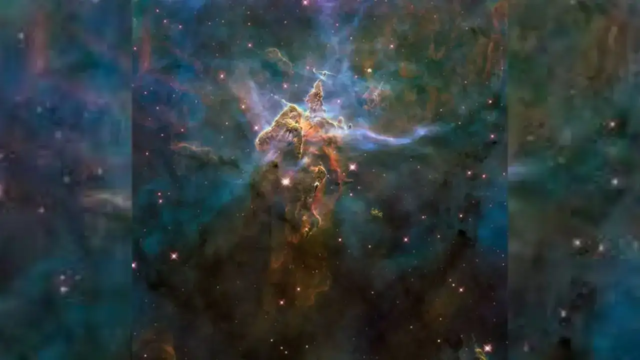Resolution of scientific challenge in calculating chemical abundance in stars can help explore their history better

The probe of astronomers into the history of formation and evolution of stars through chemical constitution of the stars has long been hampered by an intriguing ‘carbon problem’—a mismatch between predicted and observed values of an abundance of elements that prevented the scientists from correctly calculating the abundances of the various elements particularly on the surface of a certain Hydrogen-deficient stars called R Corona Borealis stars. They have now found a resolution to this with a new method to analyze the abundances and have revised the existing values available in the literature. This method will allow astronomers to calculate the elemental abundances in RCB stars more accurately and better explore their formation and evolution.
Astronomers use the spectral lines of various elements to determine their abundances in stars. Different kinds of stars can have very different abundances of these elements on their surface. One such class of stars, called R Coronae Borealis stars (RCB), have very little hydrogen, comparable to the abundance of elements heavier than helium, one of them being carbon. This is in stark contrast to the majority of stars whose atmospheres are dominated by hydrogen. These are supergiant stars, with surface temperatures of 5000K to 7000K. The surface abundances of hydrogen poor stars are measured relative to helium (He), the most abundant element in their atmospheres.
The abundance of an element is measured from its absorption line spectra. The extent of this absorption is calculated as a fraction of the underlying continuum absorption. The continuum absorption is due to Hydrogen for Sun-like stars. However, it is due to Carbon for RCB stars. Hence astronomers have been able to measure the abundances of heavier elements as a function of Carbon in RCB stars rather than as a function of hydrogen. This implies that the actual abundances can be calculated only if we know the ratio for Carbon relative to Helium.
However, spectroscopic determination of carbon to helium ratio (C/He) is not possible from the observed optical spectra of RCBs. Therefore, for constructing the model atmosphere to derive the surface abundances of RCBs, a C/He of 1% was assumed. But, the predicted strengths of the neutral carbon lines are stronger than what is observed. This mismatch is called the “carbon problem”.
In the present work led by Professor Gajendra Pandey from the Indian Institue of Astrophysics, Bangalore, an autonomous institute of the Department of Science & Technology, Govt. of India has now found a solution to the carbon problem. The team used spectral data from the Vainu Bappu Telescope in Kavalur that is run by IIA and from McDonalds Observatory in the USA to derive the C/He ratio directly from the observations of spectral bands of molecular carbon or C2 bands. The paper by G. Pandey, B.P. Hema and B.S. Reddy, which has been accepted for publication in the Astrophysical Journal, revised the surface abundances of 14 RCBs, including their fluorine abundances.
“We derived the abundance from the C2 molecular bands in RCB stars instead of the atomic Carbon lines. Unlike the neutral carbon lines, the C2 bands are sensitive to star’s surface temperature and gravity, and are independent of the carbon abundance adopted for constructing the model atmosphere, which removes the ‘carbon problem’ from C2 bands”, said Professor Gajendra Pandey, the lead author of the paper.
Co-author Dr. B. S. Reddy said, “RCB stars are located in the bulge of the Milky Way Galaxy, where most of the stars that are metal-poor (that is less than or equal to one-hundredth of the solar metallicity) are located. These derived metallicities for RCB stars are fairly consistent with their estimated orbits and location in the Galaxy”.
The research has shown that in RCBs, the fluorine abundances have no correlation with carbon abundances but show strong correlation with nitrogen abundances. In contrast, Extreme Helium star’s (EHe) fluorine abundances are strongly correlated with their carbon abundances but show no correlation with their nitrogen abundances.
“This implies that RCB and EHe stars produce Fluorine through two different processes,” said Dr. B. P. Hema highlighting the importance of accurately calculating chemical abundances in delving into the history of stars.

Observed spectra from the McDonald Observatory and synthetic spectra of the (0, 1) C2 band for SU Tau. Synthetic spectra are plotted for different assumed values of the Carbon abundance. The spectrum of the RCB star γ Cyg is also plotted with the positions of the key lines marked.
Publication link: https://arxiv.org/pdf/2108.02736.pdf
For more details, Professor Gajendra Pandey (pandey@iiap.res.in) can be contacted.





